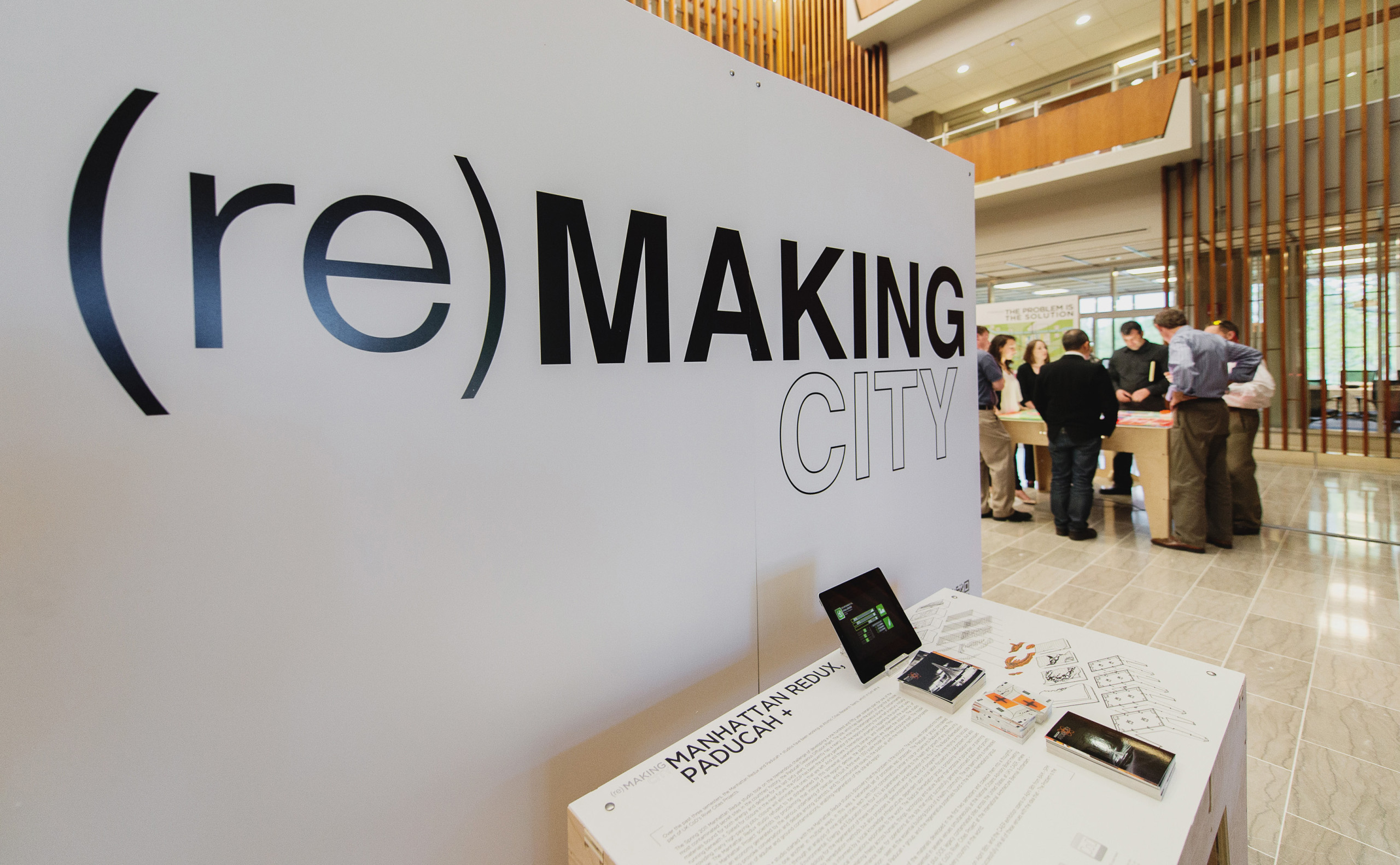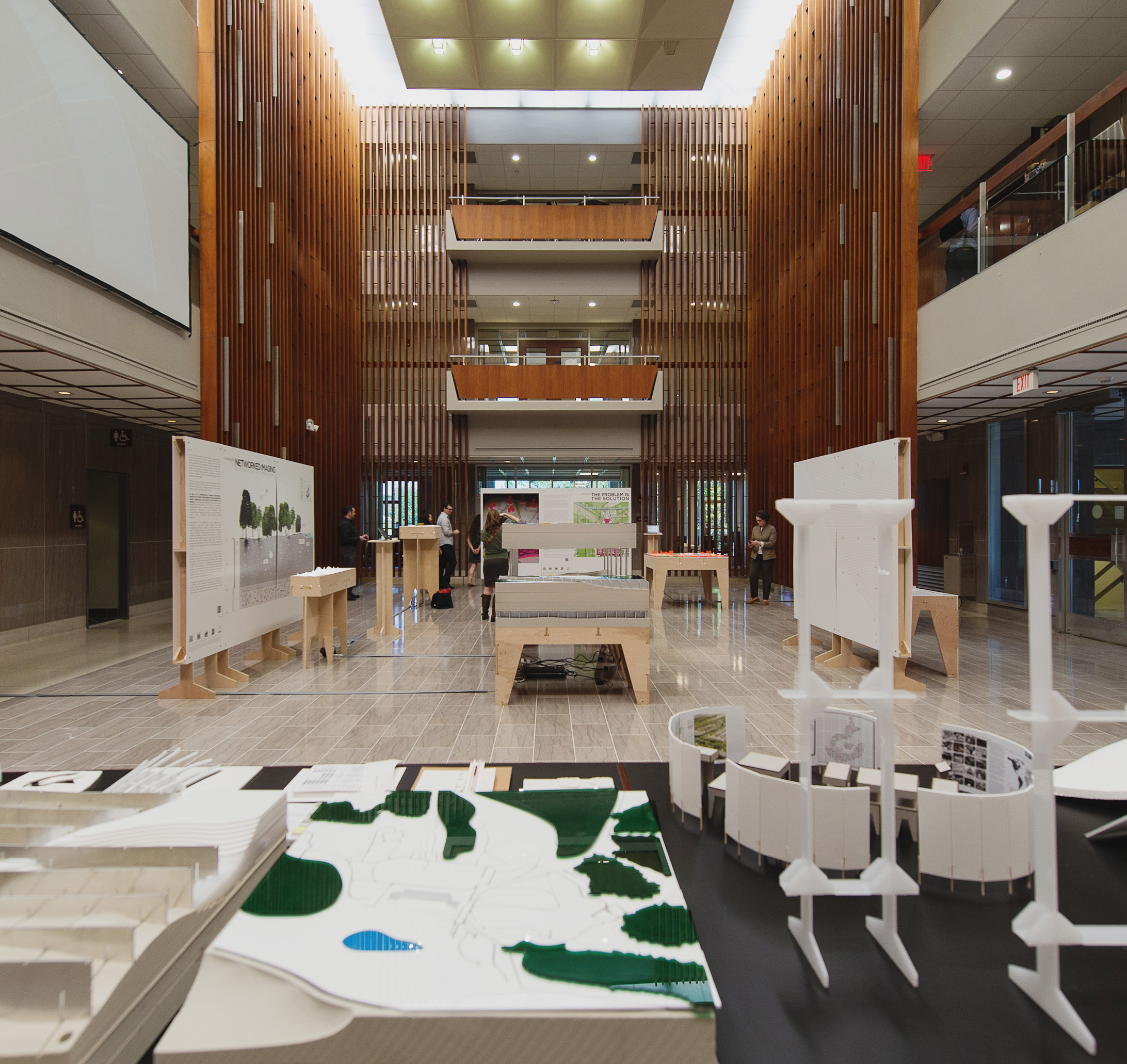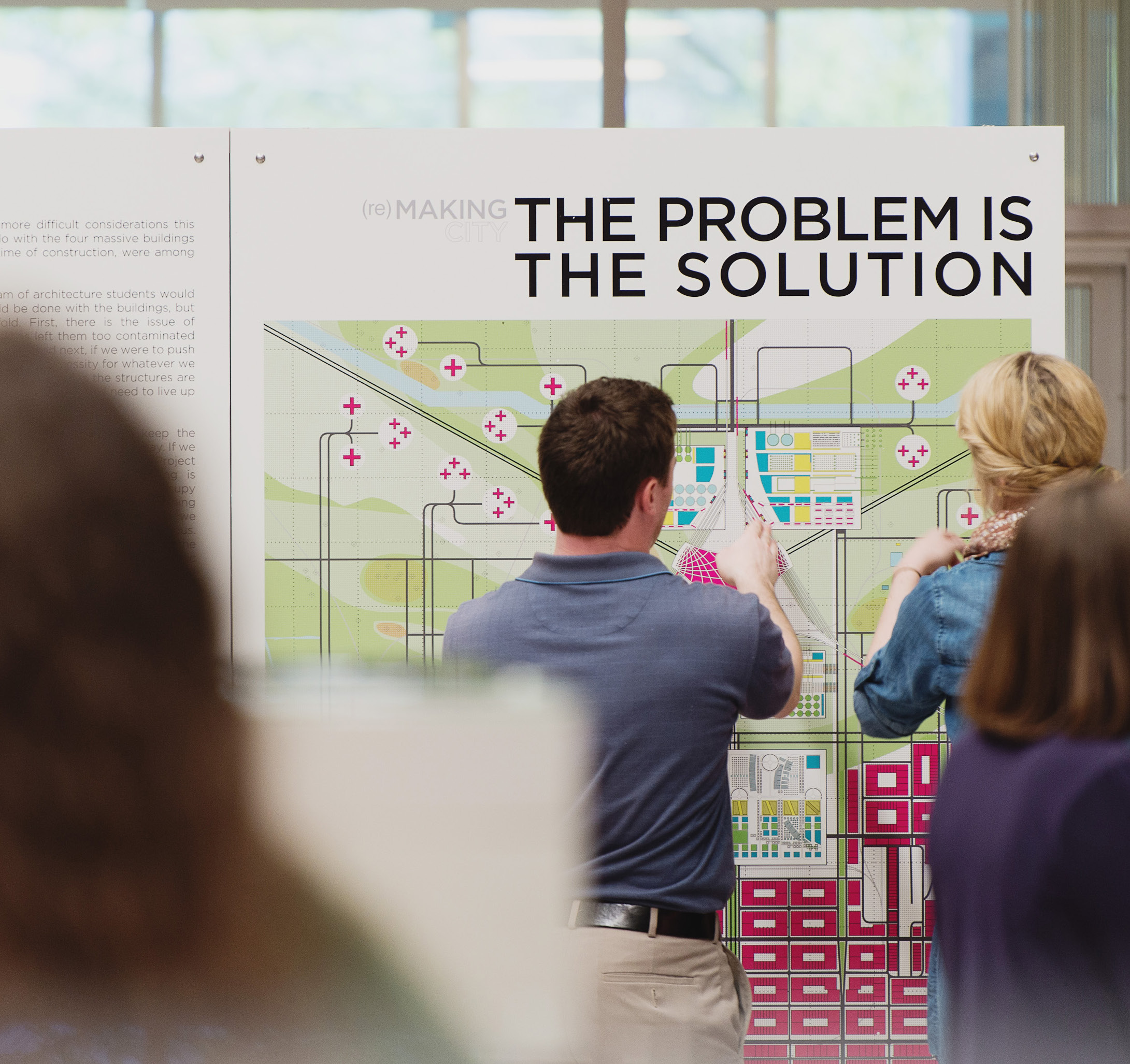Atomic Cities
Exhibitions KY + NL
SPRING 2012: ATOMIC CITIES STUDIO III
In this studio, students worked collaboratively to design two Atomic Cities exhibitions. By organizing, curating and evolving material generated in the first two semesters, the studio endeavored to tell the Plant’s story in two very different venues. The first was at the 2012 International Architectural Bienniale, themed ‘Making City’, in Rotterdam, The Netherlands. The second venue was at the 2012 National Citizens Advisory Board Meeting held in Paducah, attended by citizen board members from around the U.S., who serve their communities where the Department of Energy has remediation operations.
Objectives: Architects spend a considerable amount of time on communication. Whether it’s explaining complicated, technical issues to a client, or else presenting on behalf of a client to the public or zoning board, architects are increasingly challenged to clearly articulate complex information and to make a convincing case. The studio challenged students to develop concise and compelling exhibits that sensitively convey site history and to communicate complex remediation technologies, while conveying their optimism and imagination for Paducah’s future. The venues, one at the center of architecture and urban design culture in Europe, and the other closer to home to laypeople, compelled students to find ways to communicate through the things they make.
Outcomes: This studio produced numerous multi-media exhibition materials. For the Rotterdam exhibition, they produced an interactive physical model with writable surface and toolkit of useful parts, as well as a 250-year timeline marking progress from the plant’s construction in the 1950s to a prosperous, healthy and clean future centuries from now. For the National DOE CAB Meeting in Paducah, the studio curated several Paducah+ models to articulate the future-use scenarios, including an exhibit of 3D printed “Remediation Seeds” to demonstrate the kinds of products that could be developed at a future “Remediation-Lab” on the PGDP site. These physical objects were accompanied by a series of large scale interpretive panels with drawings and diagrams. The exhibition returned to the University of Kentucky, at the Center for Applied Energy Research atrium for the remainder of 2012.
PROJECT TEAM
INSTRUCTOR / Co-PI:
Associate Prof. Gary Rohrbacher
Co-PI:
Associate Prof. Anne Filson
POST-GRAD RESEARCH ASSISTANTS:
Carolyn Parrish
Sydney Kidd
STUDENTS:
Mikaela Coston
Lauren Early
Lindsey Elza
Chris Hayse
Jennifer Jourdan
Joseph O’Toole
Nathan Owings
Josh Robinson
Michael Schenkenfelder
Taylor Steele
Katherine Vanhoose




